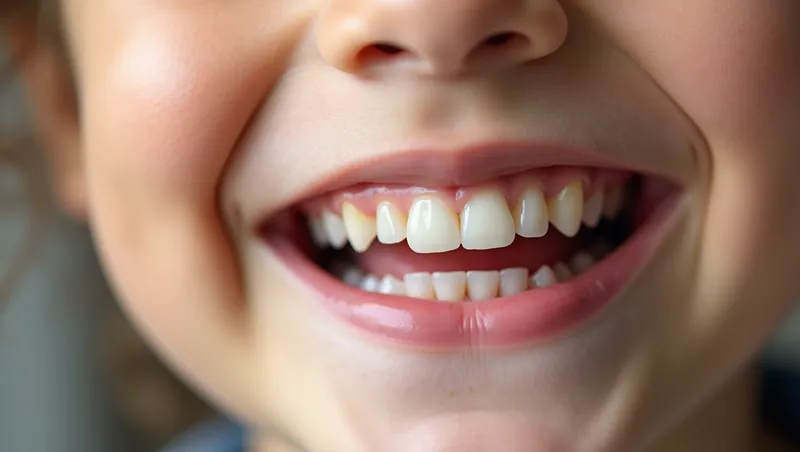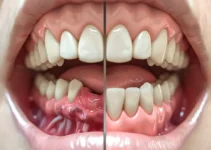The placement of dental implants in children requires careful consideration of their bone development and growth patterns. While there is no universal minimum age, most dental professionals recommend waiting until jaw growth is complete, typically around 17-21 years for girls and 18-22 years for boys. Premature implant placement can lead to complications as the natural growth of facial bones may cause implants to become misaligned or improperly positioned. Until reaching the appropriate age, temporary solutions such as partial dentures or bridges might be recommended to maintain oral functionality and aesthetics.
Minimum Age for Dental Implants
Determining the appropriate age for dental implants in children is a complex medical decision that requires careful consideration of multiple biological factors. The general consensus among dental professionals is that implants should not be placed until skeletal maturity is achieved. This typically occurs around age 17-21 for females and 18-22 for males, though individual variations exist.
The primary concern when considering dental implants in young patients is that the jawbone continues to grow and develop throughout childhood and adolescence. Premature implant placement can lead to significant complications, including implant misalignment, aesthetic issues, and potential interference with natural jaw development. Unlike natural teeth, dental implants are anchored directly to the bone and don’t adapt to skeletal growth changes.

Clinical studies have shown that placing implants before growth completion can result in the implant appearing submerged or misaligned as the surrounding bone continues to develop. This phenomenon, known as infraocclusion, occurs in up to 90% of cases where implants are placed before skeletal maturity is achieved.
Why Age Matters for Dental Implants
The timing of dental implant placement is crucial due to the dynamic nature of skeletal development during childhood and adolescence. The maxilla and mandible undergo significant changes in size, shape, and position throughout growth. These changes occur in three primary dimensions:
- Vertical growth of the alveolar process
- Transverse expansion of the dental arches
- Anteroposterior jaw development
Research has demonstrated that premature implant placement can interfere with these natural growth patterns, potentially leading to aesthetic and functional complications. The implant behaves like an ankylosed tooth, remaining stationary while the surrounding bones continue to grow and remodel.
Studies using 3D imaging have revealed that jaw growth continues well into late adolescence, with significant changes occurring even after the eruption of permanent teeth. This ongoing development makes it essential to wait until growth completion before considering implant placement.
Growth Completion Markers
Dental professionals use several key indicators to determine skeletal maturity and readiness for implant placement. These include:
- Hand-wrist radiographs to assess bone age
- Serial cephalometric radiographs
- Cervical vertebral maturation
- Completion of pubertal growth spurt
Multiple longitudinal studies have confirmed that these markers provide reliable information about growth completion. Regular monitoring over 6-12 months is recommended to confirm growth stability before proceeding with implant treatment.
Age Differences Between Boys and Girls
Scientific evidence consistently shows that girls typically complete skeletal development earlier than boys. Female patients generally reach skeletal maturity between ages 17-21, while male patients usually complete development between ages 18-22. These differences are attributed to variations in hormonal patterns and growth rates between genders. Research published in leading dental journals has documented that attempting to place implants before these age ranges significantly increases the risk of complications. A comprehensive study tracking implant outcomes in adolescents found that success rates were notably higher in patients who received implants after reaching full skeletal maturity.
Professional Evaluation Criteria
Dental professionals employ a comprehensive evaluation protocol to assess implant candidacy in young patients. This includes:
- Analysis of growth charts and developmental history
- Evaluation of dental age versus chronological age
- Assessment of third molar development
- Review of family growth patterns
If you’re interested in learning more about dental implant procedures and their long-term success rates, we recommend exploring our other articles on implant technology and treatment planning. Our comprehensive resources can help you make informed decisions about dental health for patients of all ages.
Alternatives to dental implants for children
When dealing with tooth loss in children, it’s crucial to understand that dental implants are not an immediate solution due to ongoing jaw development. Parents and dental professionals must explore various temporary and permanent alternatives that ensure proper oral function and aesthetic appearance while waiting for the appropriate age for implant placement. The selection of an appropriate alternative depends on several factors, including the child’s age, developmental stage, and the location of the missing tooth. Modern dentistry offers multiple solutions that can effectively bridge the gap until permanent restoration becomes viable.
These alternatives must fulfill essential requirements such as maintaining proper spacing, ensuring adequate chewing function, and supporting normal speech development. Additionally, they should be adaptable to the child’s growing jaw and allow for necessary adjustments during developmental stages.
Temporary replacement options
Removable partial dentures represent one of the most common temporary solutions for children with missing teeth. These appliances are custom-made to fit the child’s mouth and can be easily adjusted or replaced as the child grows. They typically feature acrylic bases with artificial teeth that match the child’s natural dentition.
Space maintainers serve as another crucial temporary option, particularly when primary teeth are lost prematurely. These devices come in various types:
- Fixed unilateral space maintainers
- Bilateral space maintainers
- Lingual holding arches
- Distal shoe maintainers
Maintenance and care
Proper maintenance of temporary dental prosthetics is essential for their longevity and the child’s oral health. Daily cleaning should include gentle brushing with a soft-bristled toothbrush and mild soap for removable appliances. Parents should assist younger children in maintaining proper oral hygiene routines.
Regular professional check-ups are crucial, typically recommended every 3-4 months, to monitor the fit and condition of the prosthetic device. These visits allow dentists to make necessary adjustments and ensure the appliance continues to serve its purpose effectively.
Fixed bridge alternatives
Maryland bridges offer a conservative approach for older children and adolescents, requiring minimal preparation of adjacent teeth. These bridges use metal or porcelain wings bonded to neighboring teeth, making them particularly suitable for anterior tooth replacement.
Traditional bridges might be considered for older teenagers whose jaw growth is nearly complete. However, they require more extensive tooth preparation and are typically reserved for specific cases where other options aren’t suitable.
Long-term considerations
When selecting alternatives to dental implants, it’s essential to consider the long-term implications for the child’s oral health. Each solution should preserve bone structure and maintain proper spacing while allowing for future treatment options.
The chosen alternative should not compromise the integrity of adjacent teeth or interfere with normal jaw development. Regular monitoring and adjustments ensure the selected solution continues to meet the child’s needs until they become eligible for permanent restoration options.
For more detailed information about specific dental restoration techniques and advanced treatment options, we encourage you to explore our other articles on pediatric dentistry and modern dental solutions. Our comprehensive guides provide valuable insights into maintaining optimal oral health during childhood and adolescence.
When can children get dental implants? Key considerations and age requirements
Dental implants for children require careful consideration of various factors, including bone development and growth. While dental implants are an excellent solution for missing teeth, they are generally not recommended for children until their jaw bones have fully developed. Here are the essential aspects to consider regarding dental implants in pediatric patients.
What is the minimum age for dental implants in children?
The minimum age for dental implants typically ranges from 16-18 years for girls and 17-19 years for boys. This is because jaw growth must be complete before implant placement to ensure proper integration and long-term success.
Why can’t children get dental implants earlier?
Dental implants cannot be placed in growing jaws because they don’t move or adapt like natural teeth. If placed too early, implants could become misaligned as the jaw continues to grow, potentially causing functional and aesthetic problems.
What are the alternatives for children with missing teeth?
Temporary solutions like partial dentures, space maintainers, or dental bridges can be used until the child reaches the appropriate age for dental implants. These options help maintain proper spacing and oral function during development.




